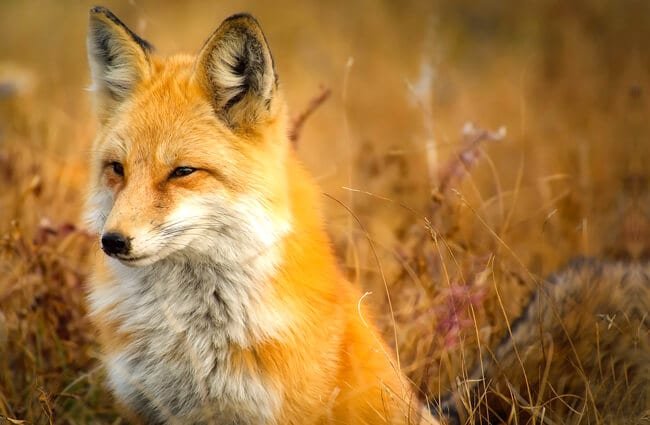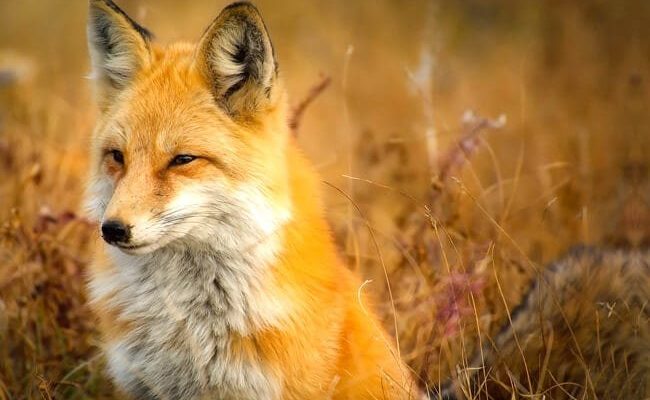
Now, if you think about foxes, you might picture a clever creature, always outsmarting others in stories and folklore. But there’s so much more to them than just their cunning reputations. They’ve adapted to various environments and have some unique traits that set them apart from other wildlife. Let’s dive into the world of the red fox and explore ten amazing facts that might just blow your mind.
1. Their Adaptability Knows No Bounds
One of the most remarkable things about the red fox is their ability to adapt to different environments. You can find them in forests, grasslands, mountains, and even urban areas. It’s like they carry a little bit of everywhere with them! This adaptability is largely due to their varied diet. Red foxes are omnivores, meaning they eat a bit of everything—from fruits and berries to small mammals and insects. You might even spot them rummaging through a city park for leftovers!
Their ability to thrive in different settings is a testament to their intelligence. For instance, in urban areas, they may rely more on scavenging human food, while in rural regions, they might hunt small rodents. It’s almost like they’re clever little survivalists, adjusting their habits based on what’s available.
Moreover, red foxes have a remarkable sense of hearing. They can hear mice squeaking from a distance of around 150 feet! This incredible sense allows them to adapt their hunting strategies based on their surroundings, making them formidable at finding food.
2. Red Foxes Have a Unique Communication Style
When you think of animals communicating, you might picture loud roars or chirps. But red foxes have their own special way of talking. They use a mix of barks, howls, and even some weirdly cute yips to express themselves. If you ever hear a high-pitched yip or a quick series of barks, you can bet it’s a red fox announcing its presence or marking territory.
What’s fascinating is that their vocalizations can carry over long distances. This helps them communicate with other foxes even when they’re miles apart. It’s like having a built-in radio system! Each sound has its purpose. For instance, the raspy call you might hear at night is often a mating call or a way to call kits back to their den.
Red foxes also use body language to communicate. You might notice them pouncing playfully, which isn’t just for fun—it also signals their position in the social hierarchy. So, if you’re lucky enough to spot one, pay attention to their sounds and movements; you might be witnessing a little fox drama!
3. Their Hunting Skills Are Impressive
Red foxes are known for their exceptional hunting prowess. They often hunt solo, using a mix of stealth and speed to catch their prey. Picture this: a red fox crouching low, inching forward, and then springing into the air to pounce on unsuspecting rodents. It’s like watching a stealthy little ninja in action!
One of their unique hunting techniques involves a characteristic leap known as the “fox leap.” This is when they jump high into the air and come down with precision to catch their prey. This not only showcases their agility but also their keen ability to judge distance and height.
Additionally, red foxes have an impressive sense of smell, which helps them locate food buried under snow. When the ground is covered, they can rely on their nose to guide them to a meal, almost like a treasure hunt! It’s these skills that have allowed them to thrive in the wild, making them master hunters of their domain.
4. They’re Family-Oriented Creatures
You might not expect it, but red foxes are quite family-oriented. They typically form monogamous pairs during the breeding season, often sticking together for years. Once the female, or vixen, gives birth to a litter of kits, both parents play a role in raising them.
Fox kits are born in underground burrows and are blind and helpless at first. The parents are incredibly devoted, taking turns hunting and bringing food back to feed their growing family. It’s like a small, tight-knit community! As the kits grow, they learn essential life skills from their parents, like hunting and social behaviors.
It’s heartwarming to watch this family dynamic unfold. The kits will often play with each other, pouncing and chasing around the den. This play isn’t just for fun—it’s essential for developing their hunting skills and social interactions. It’s a real-life version of “Survivor: Fox Edition”!
5. Their Lifespan Varies Wildly
Life as a red fox can be unpredictable, and their lifespan reflects that. In the wild, they usually live about 3 to 4 years due to factors like predation and disease. However, in urban settings where they may face fewer threats, they can live up to 6 years, or sometimes even longer if they’re lucky.
You might wonder why there’s such a difference. In nature, they face dangers from larger predators like coyotes or eagles, and harsh weather can also take a toll. Urban foxes, on the other hand, can find more food and sometimes face fewer natural predators, which gives them a better chance at survival.
Another interesting point is that red foxes have a remarkable ability to hide from dangers. They often use their keen instincts to stay out of sight, darting into bushes or using the cover of night to avoid potential threats. It’s a testament to their survival skills in the wild!
6. They Have a Varied Color Palette
While we often picture red foxes in their classic orange-red fur, the truth is, they come in several color variations. You might be surprised to learn that they can be black, gray, or even silver! These color variations are due to genetics and help them blend into different environments.
For example, in snowy habitats, you may encounter a lighter-colored fox, which helps it camouflage against the white backdrop. In forested areas, darker or more grayish tones might be more common. This ability to adapt their coloration not only aids in hiding from predators but also makes them quite a sight to see!
Interestingly, these color variations can sometimes influence their behavior too. For instance, lighter-colored foxes might be a tad more skittish in populated areas, while the darker ones adapt better as they blend into urban surroundings. Each color tells a story of survival and adaptation.
7. They’re Important for Ecosystems
Red foxes play a crucial role in their ecosystems. As hunters, they help control the populations of small mammals, like rabbits and rodents. This balance is essential for maintaining healthy environments. If their prey becomes too numerous, it can lead to overgrazing and other ecological issues.
Additionally, red foxes contribute to seed dispersal. When they eat fruits and berries, they help spread the seeds through their droppings. This process is vital for plant growth and diversity in their habitats. It’s like they’re little gardeners of the forest!
Their presence also impacts the behavior of other species. For example, smaller animals may change their habits if they sense a red fox nearby, minimizing their chances of being hunted. This ripple effect highlights the connectedness of all living beings in our ecosystems.
8. They’re Crepuscular Creatures
If you’ve ever spotted a red fox at dusk or dawn, you’re not alone! Red foxes are known as crepuscular animals, meaning they are most active during these twilight hours. This behavior helps them hunt efficiently while avoiding the heat of the day.
Being active during these cooler hours also helps them stay out of sight from predators. It’s like they have a secret schedule! You might notice them exploring their territory or hunting during this time, taking advantage of the low light to stay hidden from larger animals.
Their crepuscular nature also influences their social interactions. Many foxes use the night as an opportunity to communicate or socialize with other foxes. So, if you hear those intriguing sounds at night, it’s likely a gathering of our clever, furry friends!
9. They Can Be Quite Mischievous
Red foxes have a reputation for being clever, and they live up to it with their mischievous behaviors. Watching them can feel like observing a playful child—they’re curious, adventurous, and sometimes downright silly! They often engage in playful antics, like chasing their tails or leaping through the snow, which can be quite entertaining.
You might also notice them stealing small items or food when they think no one is watching. This sneaky behavior is likely a survival tactic, showing just how clever they can be in navigating their environment. It’s almost like they’re little tricksters, always on the lookout for their next fun adventure.
This playful nature isn’t just for show; it helps them develop vital skills. Young kits often practice pouncing and chasing, honing their hunting abilities while having a bit of fun. It’s a win-win situation—playtime is also training time!
10. They Are Symbolic in Culture
Red foxes have captured the imagination of people around the world. In many cultures, they symbolize cunning and cleverness. From ancient folklore to modern storytelling, the fox is often portrayed as a trickster who outsmarts others.
Interestingly, these cultural representations often reflect the fox’s real-life behaviors. For instance, in Native American cultures, foxes are sometimes seen as guardians of the spirit world, teaching important life lessons about survival and adaptability. Similarly, in European folklore, they often appear as sly characters in fables.
These stories not only highlight the cleverness of red foxes but also serve to connect humans with nature. They remind us of the intricate relationships between species and the lessons we can learn from observing wildlife. So, the next time you see a red fox, think about the stories they’ve inspired through the ages.
In conclusion, red foxes are much more than the clever creatures we often hear about. From their adaptability to their family dynamics and cultural significance, there’s a lot to appreciate about these fascinating animals. Whether you encounter one in the wild or hear their yips echoing through the night, take a moment to appreciate the clever beauty of the red fox. They’re truly remarkable and a testament to nature’s creativity.

